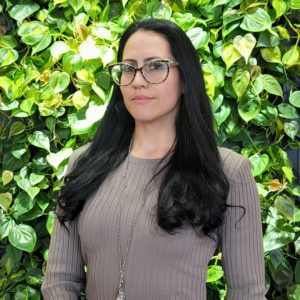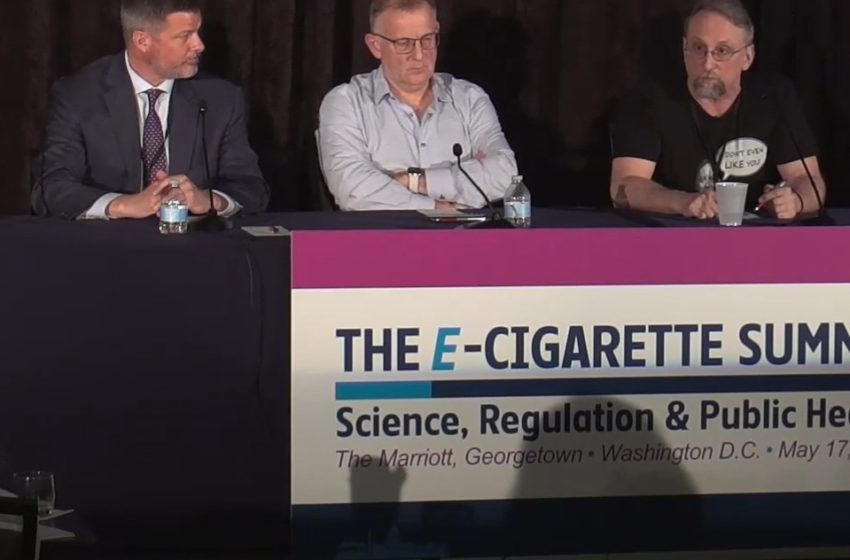
The E-Cig Summit 2022 in Washington, D.C., confirms that vaping has lost in the court of mass media.
By Monica Schick
The E-Cig Summit operates under the premise of bringing stakeholders and public health science together with regulators to discuss strategies, as demonstrated by its mission statement: “The E-Cigarette Summit has a single aim of facilitating respectful dialogue and thoughtful analysis of the latest evidence and an opportunity to explore how this should be interpreted to deliver the most effective public health and regulatory strategies.”
The E-Cig Summit 2022 was focused on current use patterns, youth usage, regulatory control and the available science. Public health representatives and stakeholders had an opportunity to air grievances and discuss solutions in panel discussions. Two major themes that emerged during the summit from both stakeholders and public health representatives alike were the deafening silence of the regulators and the miscommunication being presented to the public.

In the past two years, we have seen the window closing for flavored vapor products in the U.S., with an even larger global concern voiced by the World Health Organization. With marketing denial orders issued by the U.S. Food and Drug Administration shutting down over 75 percent of the industry, the burden of the Prevent All Cigarette Trafficking (PACT) Act and now the Omnibus Bill placing regulatory control over synthetic nicotine under the FDA, there is little to no legal market left for flavored vapor products.
Marc Sils, owner of 906 Vapor in Michigan, shared his perspective from the view of the vapor shop owner. He reiterated that vaping products were designed to help the current adult smoker quit combustibles. He expressed his frustration with the overreach of FDA regulators and the millions of smokers that will be left behind if the FDA continues its warpath of overregulation.
Jeff Lynch, facilitator of prevention and intervention education at CHOICES Prevention programs, which aim to keep kids from vaping, posed a scenario of explaining harm reduction to adolescents: “What do you do if [your] parent is a smoker; is it better for them to vape or [to] smoke combustible cigarettes?” The answer to his question was to just reiterate the message that “for the parent, I would probably recommend they go look at data.”
The problem with his response is that it only leads to the slew of misinformation available online. “What data is out there?” a parent may ask. “The only data I see is vaping is harmful.” If you Google “adult vaping,” you get a plenty of campaigns stating the harm of vaping and only a few statements on the “potential benefits” from regulators.
This bates the question, what data is being presented to the public that the public can review and trust? Lynch also speaks on his funding and how the money provided to him through a grant qualifies him to speak only about youth usage. It is not surprising to hear these types of responses coming from public health officials. He is essentially bound by his funding to comment only on one side of the narrative—the prevention of youth usage and not the benefits to current adult smokers.
Nancy Rigotti, director of the Tobacco Research and Treatment Center at Harvard Medical School, brought a clinician’s perspective on harm reduction, stating her disclosures not from the tobacco or vapor industries but from a pharmaceutical company to investigate a smoking cessation medication. In her speech, she discusses a study, “Communication Between U.S. Physicians and Patients,” regarding e-cigarettes and that only 22 percent of physicians had ever recommended an e-cigarette and most likely only to older, heavier smokers.
In that study, the data also showed that “approximately one in four physicians communicated that e-cigarettes were harmful and [the physicians] discouraged use; this communication was significantly more likely with the younger, light[er] smoker than the older, heavier smoker.” Rigotti’s commentary further demonstrated how even the medical community is falling victim to the prolific amount of misinformed media messaging regarding vaping.
With the current messaging that nicotine is detrimental to growing brains, as brought up by opponents of vapor products, it was interesting to hear Peter Hajek, professor of clinical psychology at the Wolfson Institute of Population Health at Queen Mary University, speak on the effects of nicotine usage on the brain. In his presentation, he detailed current studies that showed that the age of initial consumption of nicotine does not make much of a difference in dependency and seems to show no effect on IQ.
If this is the case, why is the public being shown worms buried under the skin and numerous other images that are grotesque and are a completely inappropriate representation of the risks of vaping? Clive Bates from The Counterfactual did not hold back when confonting this type of messaging in his presentation during the E-Cig Summit 2022.
Matthew Holman, director of the FDA’s Center for Tobacco Products’ Office of Science, discussed the premarket tobacco product application (PMTA) process and explained that out of the 8,094,108 PMTAs received, 21 have been granted a marketing order. All those products contain only tobacco flavors and are manufactured by larger tobacco companies.
During the Q&A session, Holman was asked about the miscommunication by the FDA. Holman held his ground, saying that the FDA is doing its best to communicate the message but that it is very nuanced. He responded that with more engagement with stakeholders, hopefully both parties can agree on messaging because the public is confused.
The most jarring session was one where Bates, Holman and Sils were brought together for an open conversation. During this session, Holman noted that people would not believe him if he told them that vaping is less harmful than smoking. Given Holman’s professional position, this is a shocking and foreboding statement that shows just how far the negative narrative has gone and the extent of the struggle it would take to change the public’s perception of vaping.
Sils commented that the regulatory overreach was killing the vapor space, to which Holman replied that he was not responsible for the government decision to regulate vaping. “Go down the hill here to the Capitol because they wrote the law,” Holman said. “We have jurisdiction over the product[s] that Congress gave us jurisdiction over, [and] we just got jurisdiction over synthetic nicotine. We didn’t choose that. Congress wrote a law, and now we’re responsible for implementing it.”
In response to Holman’s comment, Bates said the FDA did have choices on how to regulate and therefore was still responsible for the overreach. Obviously, this is not an issue that can be solved at the E-Cig Summit; it has been unsolvable for the better part of a decade.
The current reality is that vaping has lost in the court of mass media. The public health advocates that showed up to the E-Cig Summit and joined the conversation seemed optimistic about the possibility that vaping can be a less harmful alternative to smoking, but it is also painfully clear that, for many in the public health community, the risk that a child might at some point start vaping—even if that vaping would be in place of smoking—will continue to weigh more heavily than the chance that an adult smoker will give up his deadly addiction to traditional cigarettes through vaping.
“Is it ever right to exaggerate risks to get the behavior change you want?” Bates asked. “Is it OK to imply, by omission or commission, that vaping is as harmful as smoking just because you want to deter young people from using these products? [What are] the ethics of doing that—misleading people to get behavior change?”
Until public health can put the needs of current smokers and the importance of options for adults at the forefront of the conversation, we will continue to see a war on vaping with a bleak outlook for the current smokers who desperately want to quit and would benefit the most from these products being available on the market.
Monica Schick is secretary of the board at the Smoke-Free Alternatives Trade Association.

